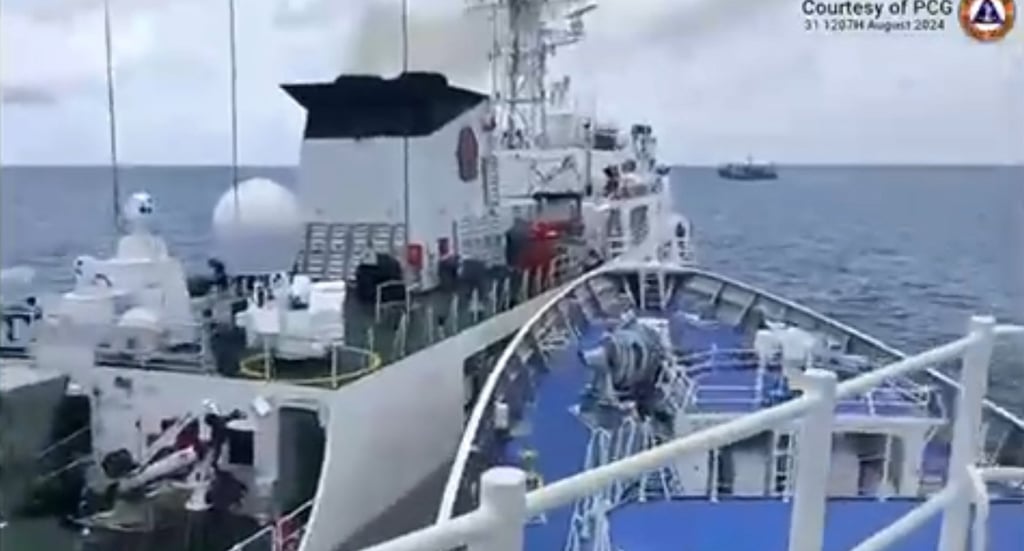South China Sea: Philippines calls for ‘restraint’ after ‘deliberate’ Chinese coastguard ramming

The incident took place at noon on Saturday in the vicinity of Escoda Shoal, also known as Sabina Shoal, 146 kilometres west of Palawan island and 1,200 kilometres from the Chinese island of Hainan.
Bersamin called the vessel’s patrol “peaceful and lawful” and “within its own maritime jurisdiction”.
He also released videos of the incident and the damage that the boat sustained.
Retired Supreme Court associate justice Antonio Carpio confirmed to This Week in Asia on Sunday that this was the first direct ramming incident involving BRP Teresa Magbanua since it started patrolling near Escoda Shoal in April.
Carpio also noted that two other coastguard vessels – BRP Cape Engano and BRP Cabra – were rammed the previous week while trying to deliver supplies.
According to the Philippines coastguard, the two vessels were swarmed by “an excessive force of 40 Chinese vessels which included six CCG, three People’s Liberation Army Navy warships and 31 Chinese maritime militia (CMM) vessels”.
The Global Times, a mainland nationalist newspaper, presented a conflicting account of Saturday’s incident, releasing a video alleging the Philippine vessel deliberately rammed the Chinese ship.
It quoted Zhang Qiyue, a research fellow at Shanghai Institute for International Studies, as saying that “the only way to solve the dispute is for the Philippine side to withdraw its coastguard ship.”

It also quoted Chen Xidi, a research fellow at China Institute for Marine Affairs, as saying that “the Philippines is not concerned about the safety of its ships, aircraft, and personnel at Xianbin Jiao (Escoda Shoal).
“The only thing the Philippines cares about is whether its actions in the South China Sea are aggressive and attention-grabbing enough, and whether it can win the ‘favour’ and ‘support’ of certain countries outside the region,” Chen also said.
During a joint press conference on August 29 by Armed Forces chief of staff General Romeo Brawner, Jnr, and US Navy Admiral Samuel Paparo, Brawner declined the US offer to help deliver supplies to BRP Teresa Magbanua, stating, “We will exhaust all means possible, and we will do it on our own first. Kaya natin ito [we can do this].”
He said that the Philippines would seek help only when “the troops are already hungry and on the verge of dying.”